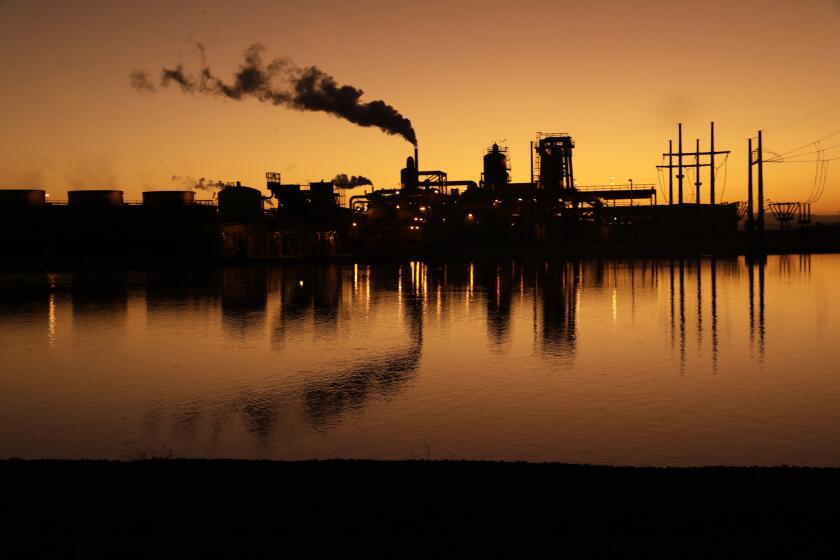Two Biden priorities, climate and conservation, collide in the California desert
The Trump administration left President Biden a dilemma in the California desert: a plan to remove protections from millions of acres of public lands and open vast areas to solar and wind farms.
Biden’s team could easily block the proposed changes, which were slammed by conservationists as a last-gasp effort by the outgoing administration to support private industry at the expense of wildlife habitat and treasured landscapes.
But even if Trump’s 11th-hour proposal goes nowhere, it offers a preview of the battles that could play out on public lands in California and other Western states as Biden looks to fight climate change by ramping up renewable energy development.
The newly inaugurated president campaigned on an aggressive goal of eliminating planet-warming pollution from the U.S. power grid by 2035. California put a similar 100% clean energy requirement into state law, with a deadline of 2045.
Meeting those targets will require dedicating huge amounts of land to solar and wind farms — a reality that has already led to tension in the Golden State, where renewable energy companies have sparred with conservationists for years over which areas should be open to development and which should be set aside to protect animals, plants and their habitat.
Our oceans. Our public lands. Our future.
Get Boiling Point, our new newsletter exploring climate change and the environment, and become part of the conversation — and the solution.
You may occasionally receive promotional content from the Los Angeles Times.
After four years during which President Trump and his appointees supported planet-warming fossil fuels and ignored the climate crisis, the Biden administration could bring those tensions back to the forefront.
On the one hand, Biden endorsed calls by scientists and activists to protect 30% of America’s lands and waters by 2030, an idea designed in part to give wildlife and plants enough space to roam and adapt as unnaturally rising temperatures wreak havoc on natural landscapes. Gov. Gavin Newsom embraced a “30 by 30” target in California as well.
On the other hand, California’s record-shattering fire season — which continued into January, with intense winds and dry weather fueling new ignitions this week — called attention to the need for more solar and wind farms to replace the coal- and gas-burning power plants fueling the climate crisis.
“We need more land, and we need projects sited soon,” said Shannon Eddy, executive director of the Large-scale Solar Assn., a Sacramento-based trade group. “We need to be moving much more quickly to site these projects and get the state off gas.”
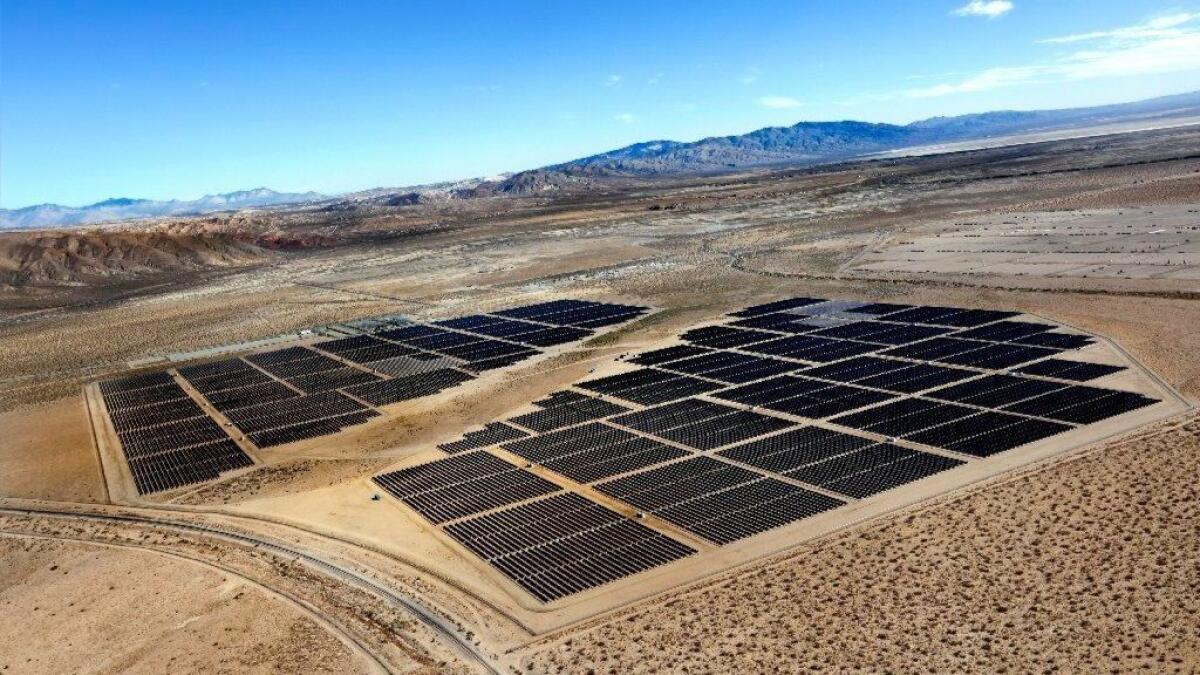
The Desert Renewable Energy Conservation Plan was supposed to help resolve those tensions — at least across more than 10 million acres of federal lands in California, where desert tortoises, bighorn sheep and golden eagles move across terrain marked by Joshua trees, salt flats and jutting mountains, from the U.S.-Mexico border to the Owens Valley.
First proposed by then-Gov. Arnold Schwarzenegger in 2008, and completed during the final months of the Obama administration in 2016, the plan designated 6.5 million acres for conservation and about 400,000 acres for clean-energy projects. But the plan was quickly reopened by the Trump administration, which announced in early 2018 that it would consider sweeping changes.
After three years of radio silence, the federal Bureau of Land Management announced proposed changes last week.
The agency would remove protections from 2.2 million acres of “national conservation lands” and 1.8 million acres of “critical environmental concern,” although some of those lands are shielded from development in other ways. The agency would also modify or eliminate dozens of “conservation management actions” that require developers to reduce the environmental impacts of their projects.
Defenders of Wildlife, a nonprofit advocacy group, said iconic desert areas losing protection would include giant Joshua trees at Pipes Canyon near Pioneertown, Native American petroglyphs at Black Mountain north of Barstow and lands along stretches of the Amargosa River that are designated as a national wild and scenic river corridor.
“They’re taking something that was woven together very carefully, and they’re yanking important threads of it out,” said Kim Delfino, a consultant to Defenders of Wildlife who offered extensive input on the California desert plan.
Support our journalism
Your support helps us deliver the news that matters most. Subscribe to the Los Angeles Times.
Renewable energy companies were frustrated by the original plan, saying it took too much land off the table and added onerous environmental rules. The wind industry in particular embraced the Trump administration’s attempted do-over, saying the desert plan had closed off some of the last areas in California where new onshore wind farms would be commercially viable.
“I understand the tendency will be for California to reject out of hand anything coming from the Trump administration. But even a broken clock is right a couple times a day,” said Nancy Rader, executive director of the California Wind Energy Assn.
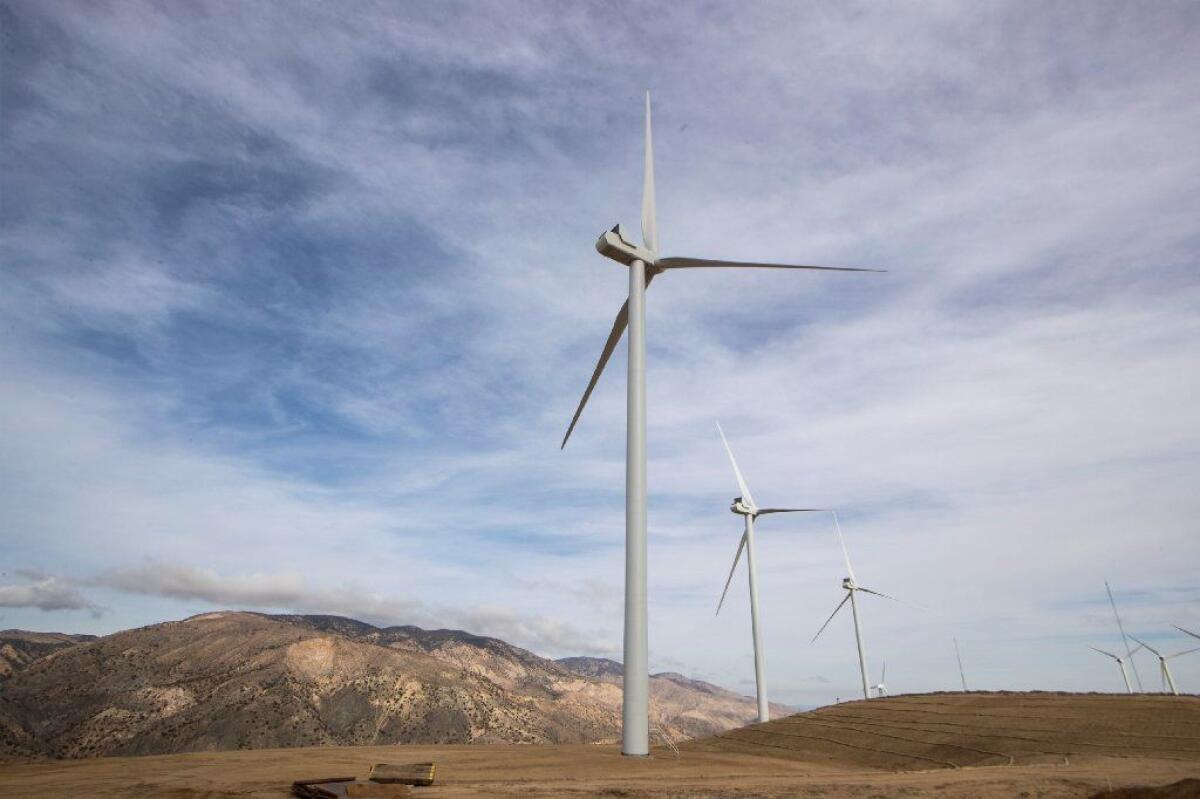
The Trump administration’s changes would allow solar and wind farms on 800,000 acres currently closed to energy development, about half of which were supposed to be set aside for off-roading and other desert recreation. The proposal wouldn’t expand any of the “development focus areas” where renewable energy projects can receive streamlined environmental permits.
Outgoing federal officials said the changes would support California’s interim goal of 60% renewable energy by 2030. They also took a dig at the Golden State’s plan to phase out fossil fuels, suggesting without offering evidence that their proposal would help Californians avoid a repeat of the brief rolling blackouts the state experienced over two evenings in August.
“As trusted forms of energy production are eliminated in California, large expanses of desert landscape will be needed to bring alternatives online to avoid blackouts and new constraints on the grid,” Casey Hammond, the Interior Department’s principal deputy assistant secretary for land and minerals, said in a written statement last week.
Conservationists were skeptical from the beginning that the Trump administration really wanted to support clean energy through the desert plan. Now, looking at the proposed changes, they suspect the big winners would actually be mining companies.
Chris Clarke, California desert program manager for the National Parks Conservation Assn., said the removal of protections from tens of thousands of acres in Panamint Valley, just outside Death Valley National Park, might benefit an Australian company that has been drilling exploratory wells in search of lithium. Similarly, the Trump plan would remove protections from big chunks of land near the Mountain Pass mine off Interstate 15 by the Nevada state line, the only major U.S. producer of rare-earth metals.
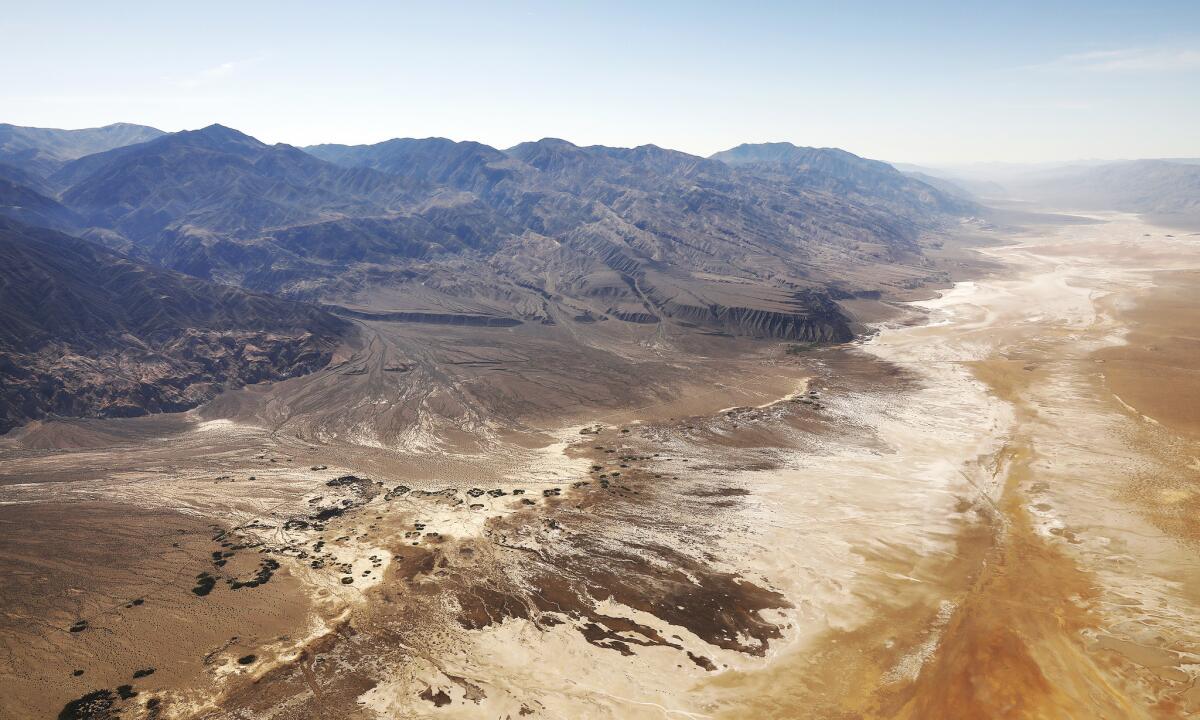
Lithium mining offers yet another example of the tension between tackling climate change and protecting nature. The metal is a key ingredient in the batteries that power electric cars and store solar power for use after sundown.
“We are strongly in favor of decarbonizing the grid, and that means taking our vehicle fleet off of fossil fuels, and that means we need lithium for batteries until we find something else that works,” Clarke said. “But there are clearly ways to explore for lithium ... that aren’t in intact habitat adjacent to national parks.”
A geothermal power company says it can make California’s Salton Sea the first major source of U.S. lithium production.
There are also places to put solar and wind installations besides intact habitat, including Central Valley farmland with dwindling water supplies and, for wind turbines, floating offshore platforms. And there are plenty of obstacles to development besides land-use restrictions, including a lack of transmission lines to carry electricity to distant cities and opposition from rural landowners.
But one way or another, avoiding the worst consequences of climate change — including ever-rising temperatures and worsening fires, droughts, storms and floods — will require the construction of renewable energy facilities covering huge amounts of land.
A study released last month by Princeton University found that achieving net-zero carbon emissions by 2050 — the long-term target urged by climate scientists and endorsed by Biden — might require the United States to build solar panels and wind turbines across more than 225,000 square miles of land, an area significantly larger than California.
The study assumes that 2,000 to 3,000 gigawatts of solar- and wind-power facilities will be needed. Even with a more favorable outlook for rooftop solar — a technology preferred by those who don’t want to see big power projects in the desert — the country would still need 1,500 gigawatts of large-scale renewables, according to a recent study funded by rooftop solar advocates.
As frustrated as the solar industry was by the original California desert plan, Eddy said she has come to believe that this kind of comprehensive planning may be needed to balance clean energy and conservation, and that road bumps are inevitable.
“This is trial-and-error territory. Nobody had ever done this before,” she said. “Maybe now we’re ready.”
The desert plan isn’t the only place where the tension between conservation and climate action has played out.
Last summer, California solar companies objected to a proposal to grant state-level endangered species protections to western Joshua trees, saying that would further limit development in the desert. Razing a small number of Joshua trees to build more solar farms, they argued, would actually be good for the species because climate change poses a serious threat to the trees.
State officials protected the species, but with an exemption that would allow 15 shovel-ready solar projects to raze Joshua trees.
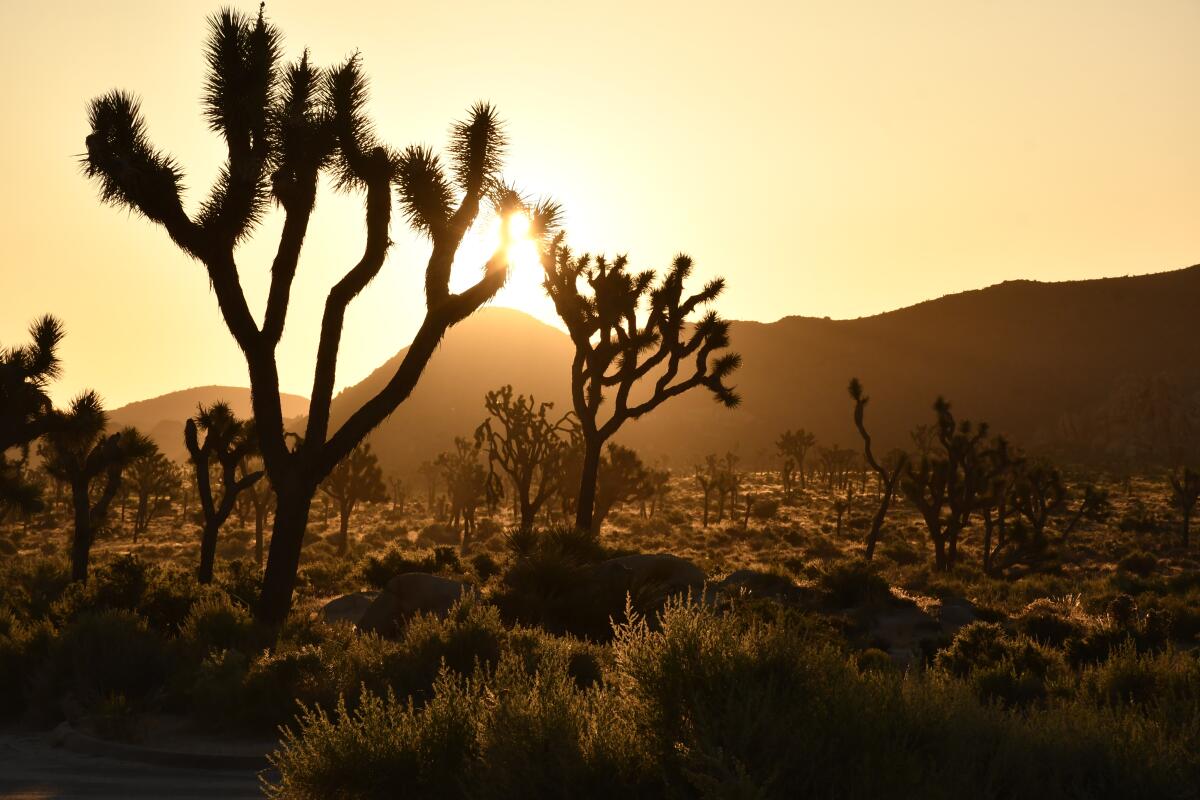
For Biden, balancing climate action and conservation probably will be a central issue in the American West, where the Bureau of Land Management oversees nearly 250 million acres that receive some of the country’s most consistent sunlight and wind.
The new president’s climate plan calls for more renewable energy on federal lands, and the government spending bill approved by Congress last month set a national target of approving 25 gigawatts of renewables on federal lands by 2025. Still, there’s a difference between approving projects and building them. The Obama administration bragged that it approved 60 clean-energy facilities capable of powering as many as 5 million homes, but those numbers dramatically overstated what actually got built.
One possible clue to the Biden administration’s strategy on public lands: The president’s newly announced nominee for deputy Interior secretary, Elizabeth Klein, is a former Obama administration official who once described the California desert plan as “a potential model that we could export to other places in the country.”
“Here’s how you can move forward with your project in a way that can still conserve and protect the environmental and cultural values that are in the California desert,” Klein said at a state government hearing in 2014, before the plan was finalized.
Your guide to our clean energy future
Get our Boiling Point newsletter for the latest on the power sector, water wars and more — and what they mean for California.
You may occasionally receive promotional content from the Los Angeles Times.
Still, it’s hard to know for sure how Biden’s team will handle the Trump administration’s proposed changes to the California desert plan, which were issued as a draft with a 90-day public comment period and could easily be rescinded.
The new administration’s decision may depend on whom it chooses to listen to. Although renewable energy trade groups consider the desert plan a failure, conservationists and California officials say it’s largely working, even though only a handful of solar farms — and no wind farms — have been proposed in the development zones so far.
“We never expected public lands in the desert to supply all of our renewable energy needs, or even necessarily most of our renewable energy needs,” said Karen Douglas, a member of the California Energy Commission who helped write the plan.
Although some changes might be helpful to better balance development and conservation, Douglas added, “this particular document that was dropped in by the Trump administration at the last minute isn’t the right starting point at all.”
Supporters of the desert plan point out that even though solar and wind developers weren’t happy with the final outcome, none of them sued to block its implementation. They see that as a reason for the Biden administration to tread lightly.
“Overall in the desert, we’ve reached a detente with a very broad range of competing interests,” said Randy Banis, an off-road vehicle enthusiast who spent years offering input on how the desert plan might affect recreation. “I’d like to see that detente remain in place. We haven’t been fighting each other for four years, until just now.”
More to Read
Toward a more sustainable California
Get Boiling Point, our newsletter exploring climate change, energy and the environment, and become part of the conversation — and the solution.
You may occasionally receive promotional content from the Los Angeles Times.
